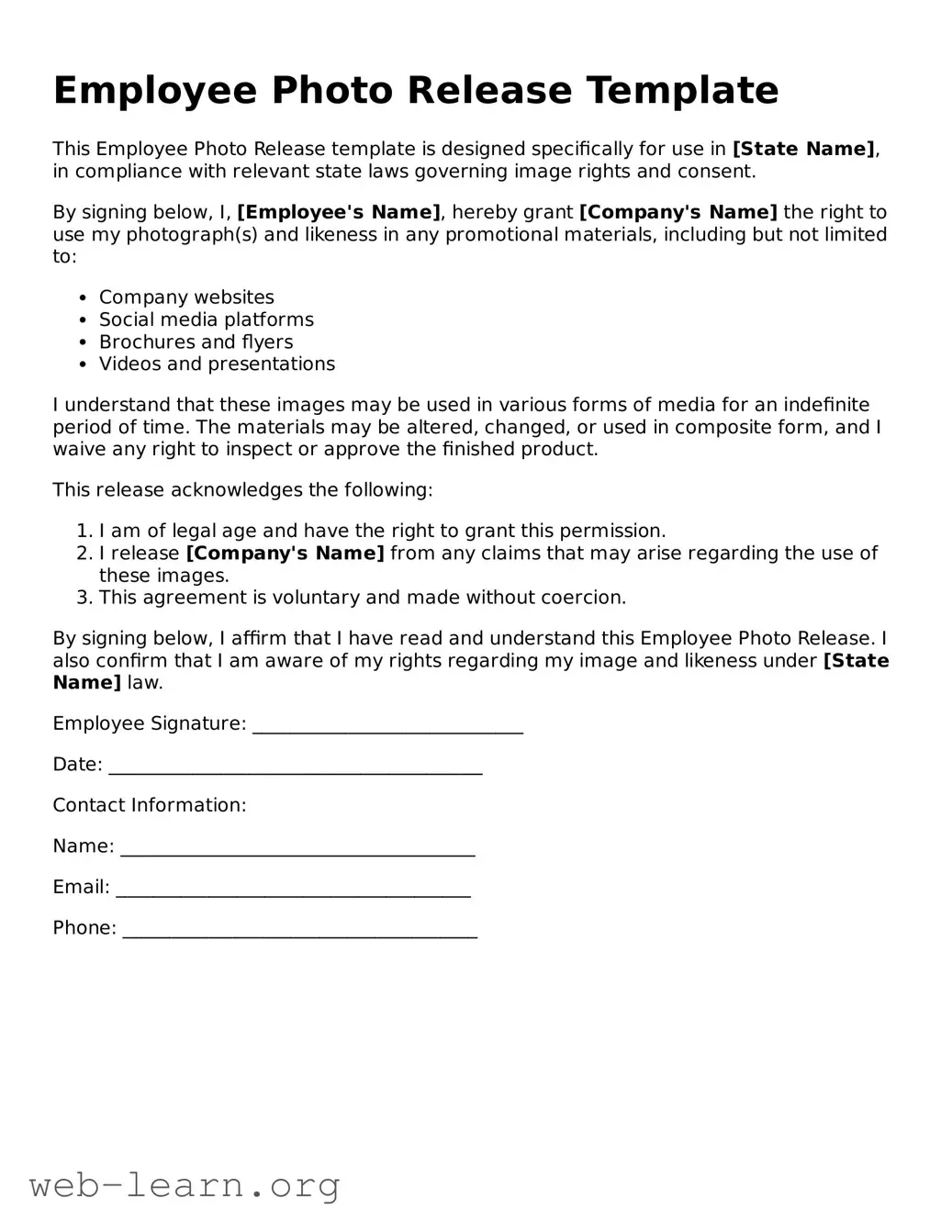Employee Photo Release Template
This Employee Photo Release template is designed specifically for use in [State Name], in compliance with relevant state laws governing image rights and consent.
By signing below, I, [Employee's Name], hereby grant [Company's Name] the right to use my photograph(s) and likeness in any promotional materials, including but not limited to:
- Company websites
- Social media platforms
- Brochures and flyers
- Videos and presentations
I understand that these images may be used in various forms of media for an indefinite period of time. The materials may be altered, changed, or used in composite form, and I waive any right to inspect or approve the finished product.
This release acknowledges the following:
- I am of legal age and have the right to grant this permission.
- I release [Company's Name] from any claims that may arise regarding the use of these images.
- This agreement is voluntary and made without coercion.
By signing below, I affirm that I have read and understand this Employee Photo Release. I also confirm that I am aware of my rights regarding my image and likeness under [State Name] law.
Employee Signature: _____________________________
Date: ________________________________________
Contact Information:
Name: ______________________________________
Email: ______________________________________
Phone: ______________________________________
